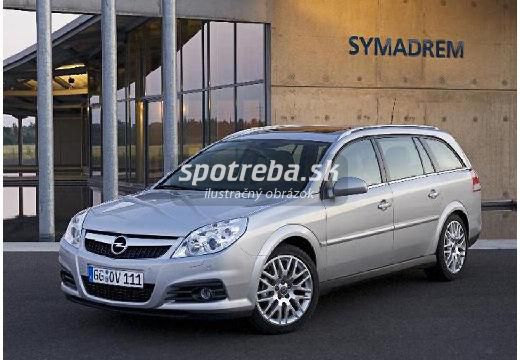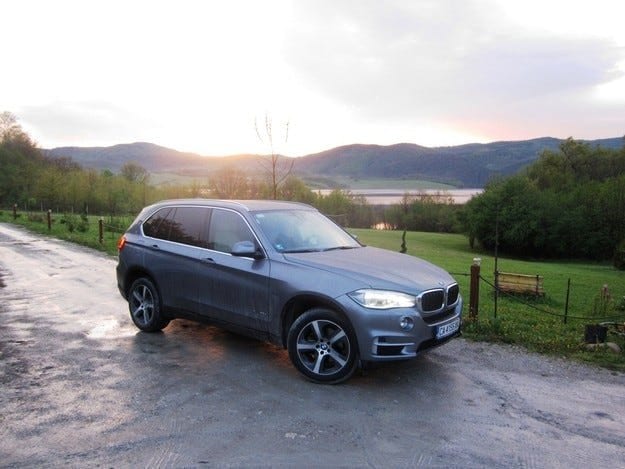
Opel Vectra Estate 1.9 CDTI Cosmo
Judging the shape of a new car is a thankless task. Especially if it's new, and not just retouching the lines of the previous model. But it's clear that the four-door Vectra and its five-door version didn't really win the hearts of buyers. There are several reasons for this, but, of course, one of them is the bulkiness of the design.
It's hard to say that the Vectra Caravan is representative of softer lines. Finally, this is just a body version of the models just mentioned. However, it is undoubtedly a product with a more refined design that even radiates something Scandinavian on its backside. Something Saabian, one could write. And, apparently, angular lines, reminiscent of modern Scandinavian cars, are the only thing that people still turn to.
Of course, because of this, neither the interior nor the driver's workplace has changed. This remains the same as in other Vectra. So simple in design, and therefore quite logical to use. More interesting is rear seat space, which has grown with the longer wheelbase - the Vectra Caravan shares the same chassis as the Signum - and especially at the rear, which basically offers around 530 liters of volume.
But this is only the beginning of everything that is available to you there. The rear door glass, for example, is additionally tinted, as are all the side windows behind the B-pillars. An electrically operated tailgate, which is undoubtedly new. And also an advantage, especially when we have a bag full of bags. On the other hand, it brings less weakness. For example, if you are in a hurry and want to close the door as soon as possible.
This work is also done using electricity, which takes longer than you need to do yourself. But let's leave everything as it is. Last but not least, the electrically adjustable door can be canceled at the time of purchase if it really annoys you. And you will save some more money. We prefer to focus on other things in the trunk, such as the useful storage boxes that you'll find on the sides and bottom, the split and folding rear seat backrest in a 1/3: 2/3 ratio, which quickly and easily expands the trunk to 1850 liters.
To carry an item 2 meters long, tilt the back of the front passenger seat. Anyone who swears to order in the back, we strongly recommend a new product called FlexOrganizer. With the foldable cross and longitudinal dividers, which you simply store at the bottom of the rear when you don't need them, you can organize the space exactly the way you want.
However, the test Vectra Caravan attracted us not only because of the extremely rich equipment and everything that its rear offers, but also because of the engine located in its nose. It's currently the smallest diesel unit the Vectra has ever had, and at the same time, you won't believe it, the most powerful. The numbers on paper are simply enviable. 150 "horses" and 315 "newtons". Power is sent to the front wheels via a six-speed manual transmission. What more could you want?
With this machine, the Vectra accelerates sovereignly, even when the speed is already well beyond the permissible limits. And this is at 1633 kilograms of its own weight. Just find that the displacement is slightly less in the two lowest gears. And then you hit the accelerator. The engine comes to life only when the tachometer needle reaches 2000. Therefore, it is very lively. Writing that the position of this car on the road is also excellent is probably not worth it.
It's good to know, though. At least when we talk about an engine as powerful and complex as this Vectra. If not for another reason, it is also because you will most likely be looking at her butt most of the time.
Matevž Koroshec
Photo by Alyosha Pavletich.
Opel Vectra Estate 1.9 CDTI Cosmo
Basic data
| Sales: | Opel Southeast Europe Ltd. |
|---|---|
| Base model price: | 31.163,41 € |
| Test model cost: | 33.007,85 € |
| Calculate the cost of auto insurance | |
| Power: | 110kW (150 KM) |
| Acceleration (0-100 km / h): | 10,5 with |
| Maximum speed: | 212 km / h |
| Mixed flow ECE: | 6,1l / 100km |
Technical information
| engine: | 1910-cylinder - 4-stroke - in-line - direct injection diesel - displacement 1910 cm3 - maximum power 110 kW (150 hp) at 4000 rpm - maximum torque 315 Nm at 2000 rpm. |
|---|---|
| Energy transfer: | front wheel drive engine - 6-speed manual transmission - tires 215/50 R 17 W (Goodyear Eagle NCT 5). |
| Capacity: | top speed 212 km / h - acceleration 0-100 km / h in 10,5 s - fuel consumption (ECE) 7,8 / 5,1 / 6,1 l / 100 km. |
| Mass: | empty vehicle 1625 kg - permissible gross weight 2160 kg. |
| External dimensions: | length 4822 mm - width 1798 mm - height 1500 mm - trunk 530-1850 l - fuel tank 60 l. |
Our measurements
| T = 26 ° C / p = 1017 mbar / rel. vl. = 60% / Odometer Condition: 3708 km | |
| Acceleration 0-100km: | 10,5s |
|---|---|
| 402m from the city: | 17,4 years ( 133 km / h) |
| 1000m from the city: | 31,4 years ( 170 km / h) |
| Flexibility 50-90km / h: | 10,1 / 18,1s |
| Flexibility 80-120km / h: | 10,6 / 17,2s |
| Maximum speed: | 212km / h (WE.) |
| test consumption: | 8,2 l / 100km |
| Braking distance at 100 km / h: | 40,0m |
| AM table: | 40m |
We praise and reproach
buttocks shape
spacious and comfortable luggage compartment
rich equipment
engine performance
back bench seat
position on the road
by simply electrically closing the tailgate
useless door drawers
rigid driver's workplace
steering wheel control

